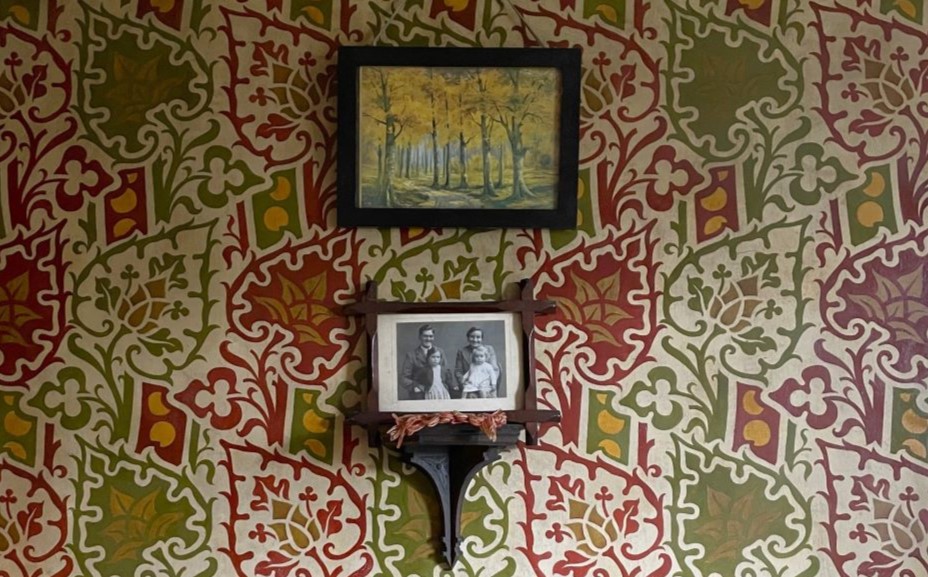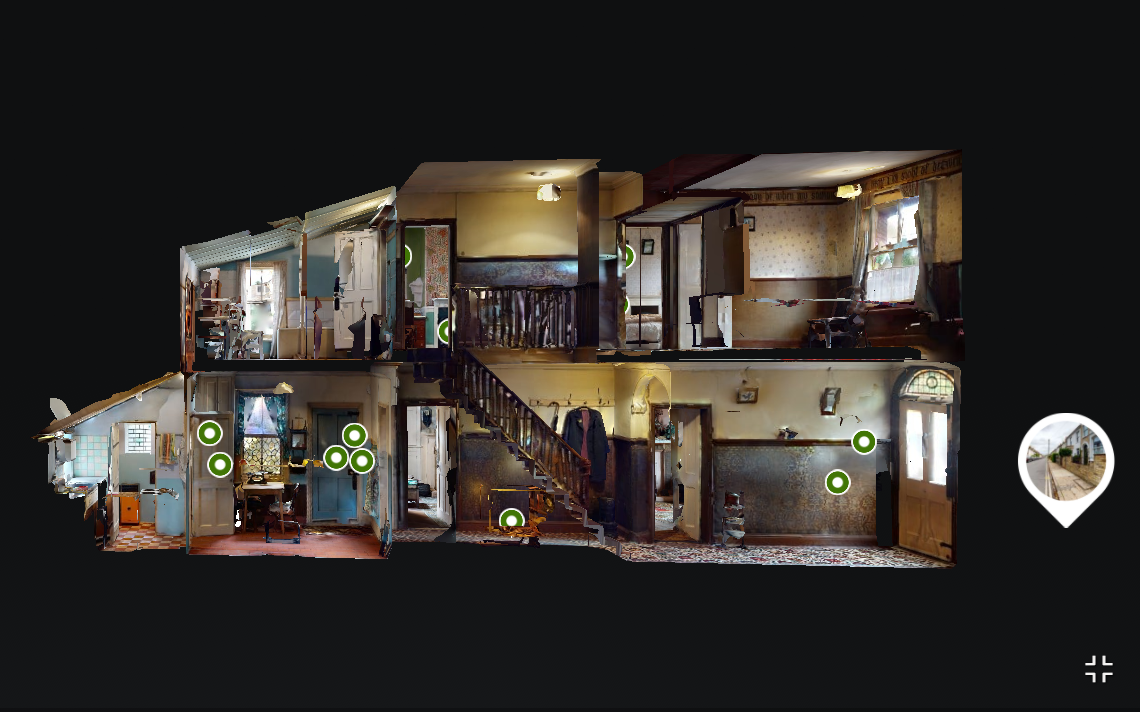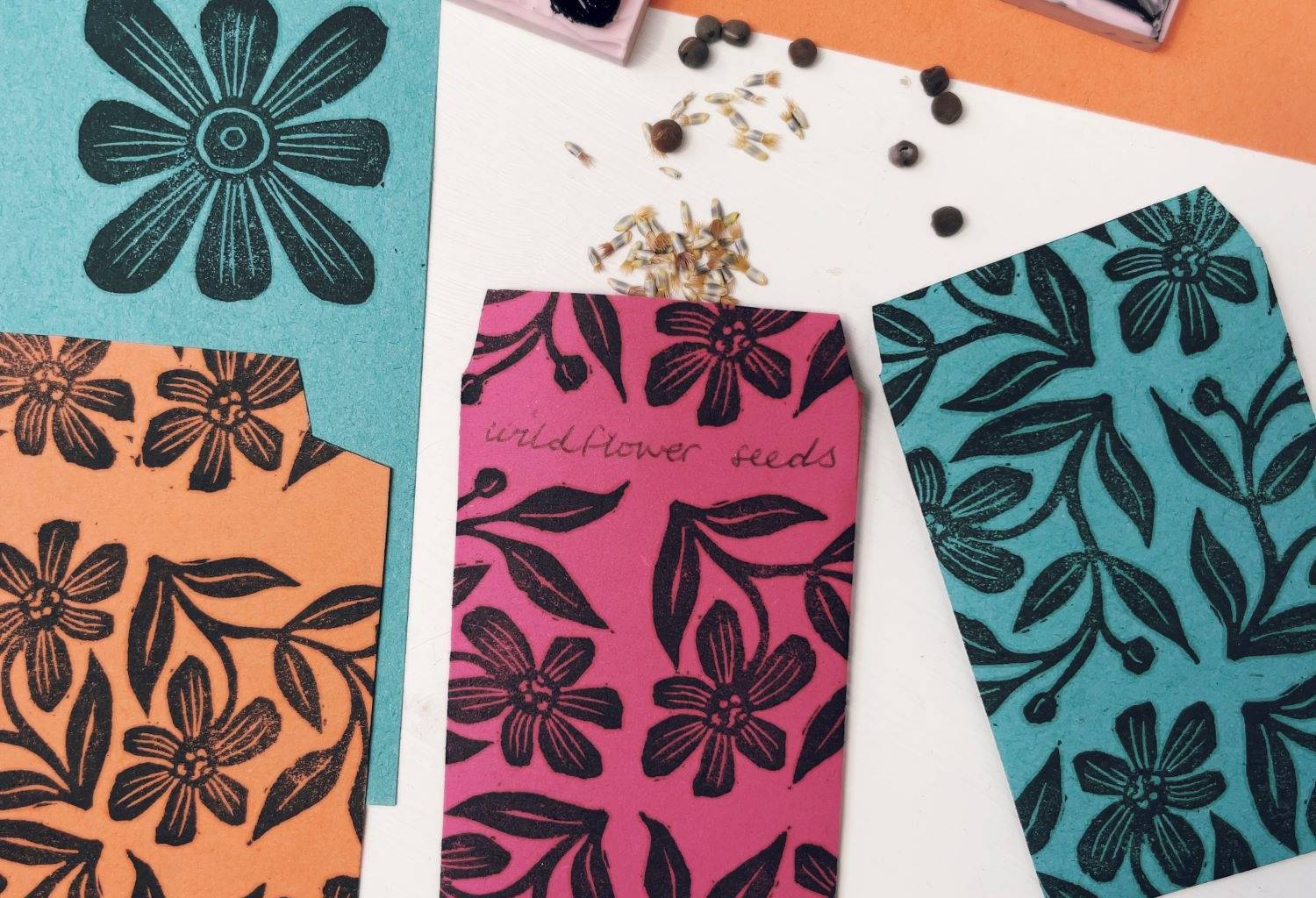A Few of My Favourite Things
by House Guide, Penny Robson.
In medieval times portcullises were meant to keep people out, or at least imprison them when they were unlucky enough to have one fall behind them just as they were coming up against another blocking the way in front. Then why, you might wonder, are there two in David Parr House? Fortunately, they are just over 6 inches square and not of a size to block an entrance; and they are made of plaster of Paris, not metal bars.
This pair of portcullises are among my favorite things in the house. They are small gilded grates with a green foliage surround, hanging from thin wires in the alcoves on either side of the drawing room fireplace. And they pose a mystery. Are they purely ornamental, something set aside from one of the many decorative jobs David Parr did during his career as an artworkman for the firm of F R Leach & Sons? Or did they have some function such as holding up a swag of fabric or curtain in the empty recesses?
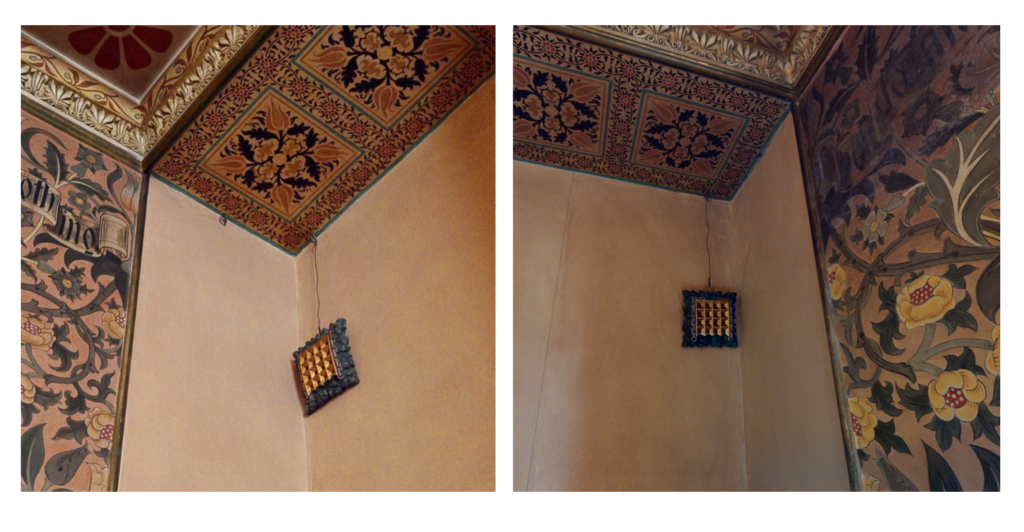
As objets d’art, they are perfect: good design made beautiful by decoration, specifically gilding. Their symbolic and decorative function goes back in history as the heraldic badge of the House of Beaufort and later as a royal symbol of the first Tudor King, Henry VII. Henry’s mother was Lady Margaret Beaufort, from whom he adapted it through matrilineal descent. The Beaufort portcullises were uncrowned, though often elaborated; the Tudor ones, as symbols of royalty, had crowns at the top.
Portcullis symbols can be seen all over Cambridge, and there is good reason for this. They are closely associated with three of the University colleges: St John’s, Christ’s and King’s. Lady Margaret founded St John’s and Christ’s, and her symbol can be found on the gates of both colleges. King’s was founded by Henry VI, but at his deposition he was followed by his nephew, Henry VII, who brought with him the inherited crowned portcullis emblem. It appears repeatedly in the College, most spectacularly in the Chapel. Following this period, the portcullis became a moderately common motif in English heraldry.

Today it is the accepted emblem of Parliament in the Palace of Westminster, having its roots in the rebuilding of the Palace after the fire of 1512. Subsequently, after its destruction, again by fire, in 1834, the portcullis symbol was adopted by Sir Charles Barry, an architect of the new Palace. His idea was to make the Houses of Parliament a ‘legislative castle’, and castle gates fit with this concept.
Following this distinguished history, we return to our original question, ‘How did portcullises come to grace the drawing room of David Parr’s modest terraced house?’ The short answer is that we simply do not know. This house is rich in stories, some fact, others fiction. The speculative stories have the power to enhance one’s appreciation of David Parr’s life in the house, which he must have thought of as his castle.
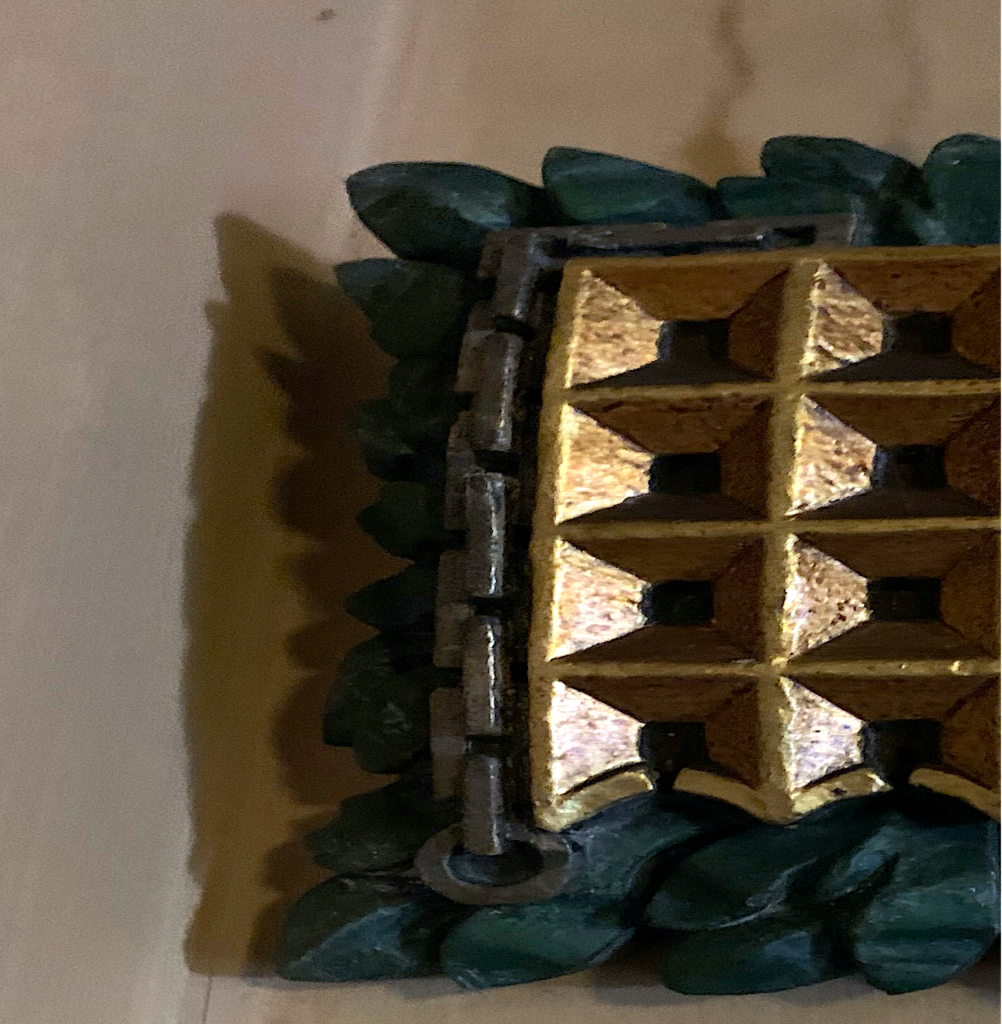
David was an imaginative ‘re-purposer’. He never let anything go to waste, and the house is full of things which must have been surplus to the job with the Leach firm: scraps of decorative wall covering, ‘door furniture’ and, perhaps, small plaster portcullises, set aside and replaced with fresh ones when college gatehouses were being restored. David Parr was a highly skilled artist, valued and respected; there would be no question of his taking anything without its being offered.
Returning to the idea that the portcullises might have served as a hook for hanging a decorative piece of tapestry, there is good reason to believe this. The entire drawing room is elaborately ornamented with stenciled decoration, all hand painted by David. Only the recesses are painted in a block color with no pattern work, therefore needing ‘treatment’.
Unlike a good mystery story, the secret of David’s portcullises, cannot, and probably will not, be solved. But that does not detract from the endlessly compelling story that is the David Parr House.

